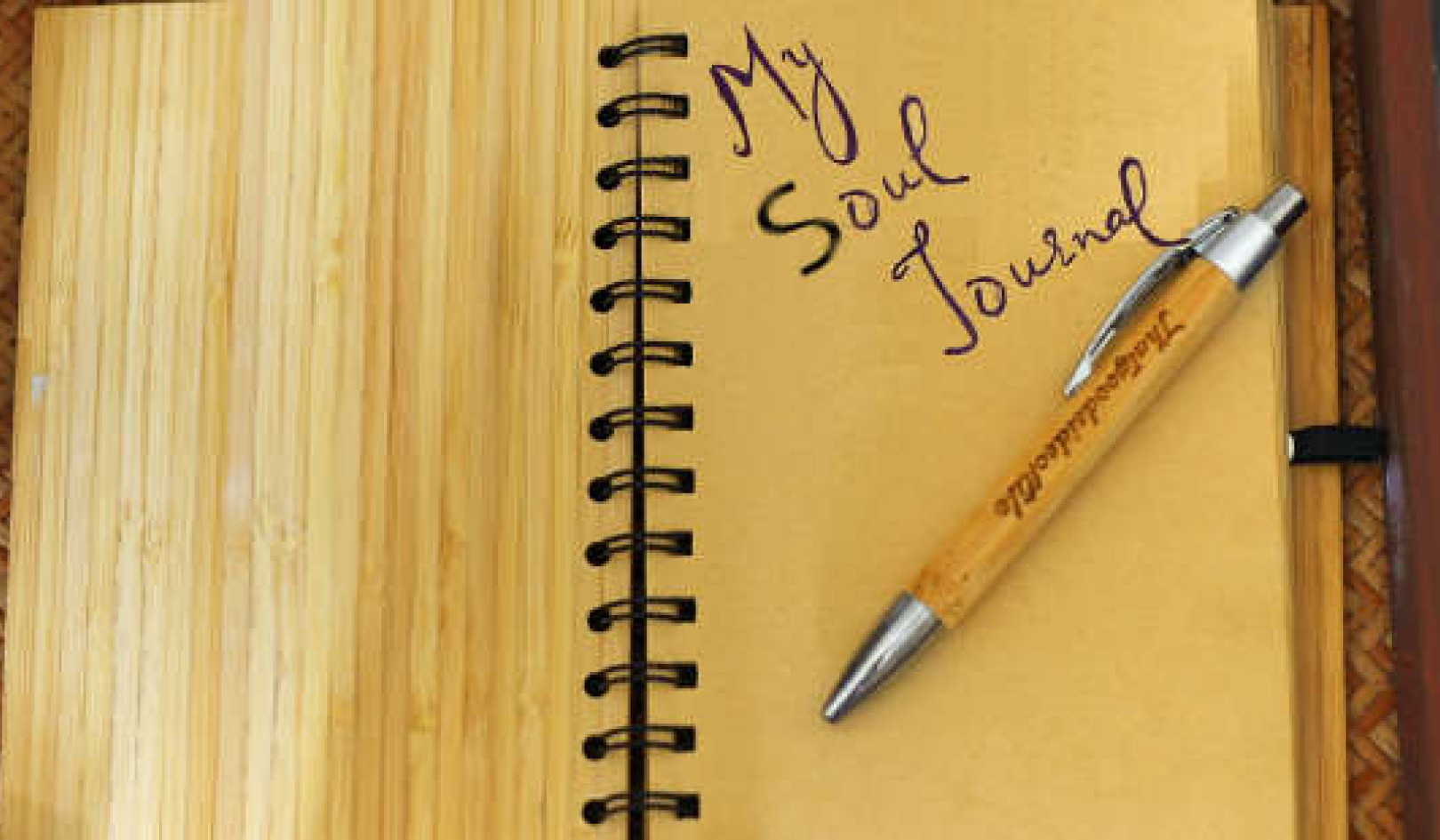
Give yourself permission to surrender your self-doubts completely.
Although Joan of Arc is often depicted carrying her sword and shield into battle, it was her standard (that is, her flag) that carried the symbol of protection for her. Her standard reflected her commitment to the world of Spirit.
Joan’s standard was “sown with fleurs-de-lis, and showed a world with an angel on each side, white in color. The names Jesus Maria were written upon it and it had a silk fringe.” During her trial, she said that she was “forty times fonder of her standard than her sword,” and she carried the standard proudly as she led an army of twelve thousand men into battle.
Creating Your Own Standard and Healing Symbol
In this exercise, you will have the chance to create your own standard that you can use proudly as your healing symbol.
This exercise is a combination of writing and ceremony. Ceremony in Native American culture is a way to honor Spirit or the Creator. When circumstances in our lives are too overwhelming, chaotic, frightening, or out of our control, the best response, based on courageous wisdom, is to release the circumstances. This is not always easy, but it can be done.
What I am suggesting is that although you cannot necessarily alter the problem, you can release the manner in which you respond to that experience. This exercise will help you give form to your feelings and provide you tools for surrender.
For this exercise, you will need one or more small (not full-size) flags in colors that appeal to you. You should be able to purchase them at a craft store. If you will be using multiple flags, choose different colors. For example, a white flag may indicate your connection with the Divine. A blue flag could symbolize your healing. A pink flag might help you work on issues of self-esteem and self-love. If you decide you would prefer to create your own flags, visit a fabric store and choose fabrics you can glue to a wooden rod to create your flags. You will also need colored pens that will write on the material your flags are made of, ribbon to tie around the flags, and any other item you would like to add to your flags.
STEP 1: Write down all the issues currently in your life that you need to surrender and that you are willing to surrender at this time. These might include such issues as pain, frustration, self-hate, anger, depression, and sadness. Make a complete and honest list. Don’t include anything you think you should surrender but don’t feel strongly about.
STEP 2: After you have identified all the issues you are willing to surrender, write them on one or more flags. It is your choice whether you want to layer all the issues on one flag or divide them among several. For each flag you are using, once you have written on it what you wish to surrender, wrap the flag tightly around its rod, bind it with ribbon, and set the flag aside.
STEP 3: Now you are ready to write a words-of-power statement that will help clarify your intention. A words-of-power statement is akin to an affirmation. It is a series of words, or a single word, that has particular meaning and personal power for your life at this time. Here are a few examples:
“I am willing to surrender my pain.”
“I am willing to surrender my fear.”
“I am willing to surrender my lack of faith in myself.”
“It is released, and I surrender to the wisdom of God (or Spirit or the Creator) for the greater good.”
These examples are only suggestions. Remember that your words-of-power statement should have a strong resonance with you and speak to your life’s journey.
STEP 4: In this step, you will be offered ideas for creating a ceremony that speaks to your individual needs. Ceremony is an art form and includes the creation of sacred space through ritual and prayer. Ceremony is always holy and honorable.
When you have finished constructing your flags, you will need to decide where you want to place them. But first, imagine how you could use ceremony to call upon the sacred dimension.
Your ceremony can include (or consist entirely of) lighting candles, saying your words-of-power statement aloud, using an altar you have created in your home, bathing, or simply washing your hands. Any of these can assist you in connecting with the peaceful energies of surrender.
Your ceremony can also include the process of burning sage, called “smudging.” Smudging is a beautiful vehicle for creating sacred space, and Native Americans use sage not only to consecrate the space where a ceremony is taking place, but also to cleanse all of the participants entering that space.
Sage holds great medicinal powers, and this pungent plant has been used for centuries as a healing agent. Its ability to remove any energies from our bodies or from the surroundings that do not belong to us is powerful and deserves respect. I agree with author Kenneth Cohen, who says that “sage is like a person whose presence is healing.”
When you use sage as a regular practice, you will notice subtle changes in energy — the energy of the room where you are smudging as well as your own energy. It is always a beautiful process. There are many good books on the art of smudging, and I suggest that you read about sage ceremonies before performing one if you are not familiar with the process.
If you choose to burn sage, make sure you have air flow so you don’t start a fire. You can also purchase a form of sage (an extract or liquid) that is prepared especially for ceremonial purposes if you don’t want to burn sage.
If you will be smudging as part of your ceremony, light the sage and let it envelop you to cleanse your aura, the energy system that surrounds your body. Sage connects to the spiritual landscape, and in this case, you are the spiritual landscape. Allow the sage to surround your body — front and back, above and below. Don’t forget to sage your feet.
Healers use sage not only on themselves, but also to clear any unwanted energies from their medicine tools. After you have cleansed yourself with the sage, let its sacred power cleanse your flags.
When you have finished your ceremony, place your flags in a visible place in your home or sacred space. If you use smudging, you can always return to it whenever you feel that your energies are stuck.
©2015 by Janet Lynn Roseman. All Rights Reserved.
Reprinted with permission of the publisher,
New World Library, Novato, CA 94949. newworldlibrary.com.
Article Source
 If Joan of Arc Had Cancer: Finding Courage, Faith, and Healing from History's Most Inspirational Woman Warrior
If Joan of Arc Had Cancer: Finding Courage, Faith, and Healing from History's Most Inspirational Woman Warrior
by Janet Lynn Roseman, PhD.
Click here for more info and/or to order this book.
About the Author
 Janet Lynn Roseman, PhD, is an assistant professor in medical education at Nova Southeastern University College of Osteopathic Medicine in Fort Lauderdale, Florida, and director of the Physician Fellowship Program in Integrative Medicine. She specializes in spirituality and medicine, and created the Sidney Project in Spirituality and Medicine and Compassionate Care™, a unique model in medical education that reminds physician residents of the sacredness of their profession and the importance of creating caring environments for both patients and physicians. She leads workshops for people with cancer and offers the “Cultivating Courage with Joan of Arc” training program for healthcare professionals who work with oncology patients. She is also a Reiki master, dance therapist, and intuitive healer. Her column on healing with Joan of Arc appears in Sedona Journal of Emergence.
Janet Lynn Roseman, PhD, is an assistant professor in medical education at Nova Southeastern University College of Osteopathic Medicine in Fort Lauderdale, Florida, and director of the Physician Fellowship Program in Integrative Medicine. She specializes in spirituality and medicine, and created the Sidney Project in Spirituality and Medicine and Compassionate Care™, a unique model in medical education that reminds physician residents of the sacredness of their profession and the importance of creating caring environments for both patients and physicians. She leads workshops for people with cancer and offers the “Cultivating Courage with Joan of Arc” training program for healthcare professionals who work with oncology patients. She is also a Reiki master, dance therapist, and intuitive healer. Her column on healing with Joan of Arc appears in Sedona Journal of Emergence.
Watch an audio-visual presentation: Honoring The Medicine Now (with Janet Lynn Roseman)
























